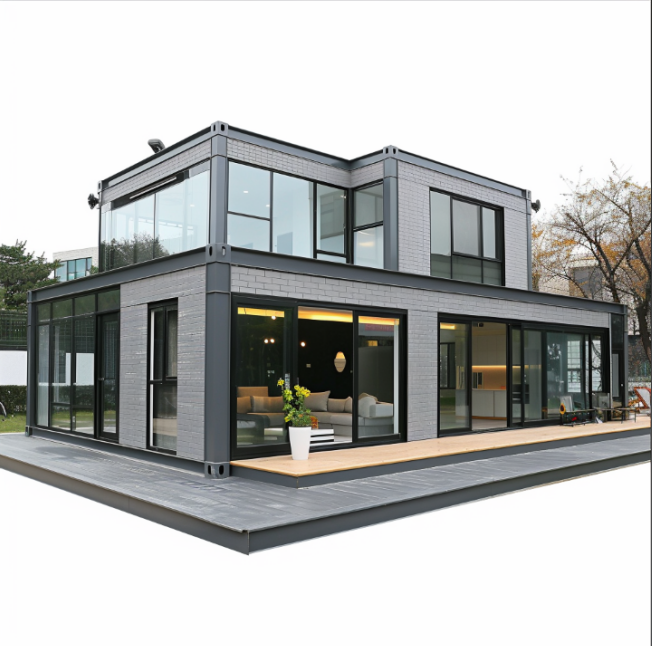Transforming Shipping Containers into Livable Spaces
Shipping containers are being ingeniously repurposed into functional, aesthetically pleasing apartments, marking a significant shift in affordable housing solutions. This transformation involves innovative design elements, including advanced insulation, the strategic use of natural light, and eco-friendly materials that enhance the livability of these spaces. According to global statistics, the adoption of container apartments is on a remarkable rise, with thousands being erected annually to address housing shortages. For instance, the Watt Works project in Los Angeles demonstrates the feasibility and appeal of these structures by successfully turning 58 shipping containers into studio apartments, catering to underprivileged communities. This initiative exemplifies how urban settings can benefit from container apartments by offering sustainable, attractive, and affordable housing options.
Cost-Effective Alternative to Traditional Construction
Container apartments provide a cost-effective alternative to traditional construction, making them an attractive option for those seeking affordable housing solutions. On average, building with shipping containers can reduce costs by 10 to 15 percent compared to conventional methods, as demonstrated by projects such as Watt Works. These savings stem from reduced construction times and the use of prefabricated materials, which offer long-term energy efficiency. Housing experts emphasize that these prefabricated homes provide economic benefits, as they often come with built-in energy-saving features such as solar panels and cross-ventilation systems. Case studies reveal that projects leveraging container construction have successfully managed budgets, showcasing their viability as a sustainable solution in the market for affordable housing options.
Durability and Weather Resistance
Shipping container homes boast remarkable durability and weather resistance due to their steel structure, which ensures resilience against severe weather conditions. "The steel architecture of container homes can often surpass traditional building materials in terms of longevity," as indicated by various studies on housing resilience. This robustness is further evidenced in regions with harsh climates, where container homes have successfully withstood extreme weather events, from hurricanes in coastal areas to heavy snowfall in mountainous regions. These attributes make container homes an attractive option in constructing durable housing solutions, particularly for modular homes and similar structures.
Modular Design for Scalable Solutions
The modular design of container homes offers unparalleled flexibility, allowing for easy expansion or modification to meet changing demographic demands. This adaptability has been demonstrated worldwide, with several success stories where scalable container designs have facilitated quick relocation and adaptation to urban development strategies. Notably, these modular homes have been integrated into city planning as an efficient solution for accommodating mobile home communities and transitional housing needs. The ability to customize size and layout makes container-based housing a versatile choice for scalable housing solutions in growing urban environments.
Faster Construction Timelines
The expedited construction timelines associated with container-based housing arise from the efficiency of off-site manufacturing and assembly processes. A detailed comparison shows that the construction of container homes can save significant time—often being completed in a fraction of the time required for traditional building projects. Developers frequently praise the rapid completion of container projects, with testimonials highlighting the streamlined manufacturing process. For instance, the average construction time for container housing is notably reduced due to prefab house techniques, providing quick housing solutions in emergency circumstances or urban developments facing tight deadlines.
Navigating Zoning and Building Codes
The journey of implementing container homes isn't without its hurdles, particularly when it comes to zoning and building codes. These non-traditional housing solutions often face regulatory barriers due to their unconventional nature. Developers often encounter zoning challenges in jurisdictions unaccustomed to this type of construction. To successfully navigate these challenges, it is crucial to understand local building codes specific to container housing. Engaging in dialogue with local regulatory bodies and presenting the benefits of affordable and sustainable housing can pave the way for modifications. Successful examples include lobbying efforts in areas like North Omaha, where shipping containers are increasingly recognized as viable housing options.
Insulation and Climate Control Solutions
Effective insulation is a cornerstone of energy-efficient housing, and the same applies to container homes. Given that shipping containers are made of steel, they can be subject to temperature fluctuations. Therefore, implementing innovative insulation materials and techniques is essential for different climates. Various projects have successfully incorporated state-of-the-art insulation solutions, adapting to both hot and cold environments. For instance, some container homes utilize spray foam insulation for its high thermal resistance, while others employ rock wool for its soundproofing and fire-resistant qualities. Effective climate control mechanisms, such as smart HVAC systems, further enhance the energy efficiency of these homes.
Community Acceptance Strategies
Gaining community acceptance is crucial for the successful implementation of container housing projects. Engaging the community through effective communication strategies can build support and reduce skepticism. Demonstrating the benefits, such as affordability, sustainability, and rapid construction, can foster appreciation and acceptance. Successful projects often share their stories with the community, showcasing positive impacts through tours or open houses. For instance, initiatives that actively involved local residents in decision-making have led to successful integration of container apartments into neighborhoods. Experts recommend presenting these homes not as temporary fixes but as innovative solutions that blend well with existing community aesthetics.
Space Efficiency Showdown
When trying to optimize limited space in housing, container apartments and tiny homes are two intriguing options. Both leverage creative design to maximize a small footprint, yet they approach spatial efficiency uniquely. Container apartments often utilize modular design principles, crafting a streamlined, adaptable living environment tailored for modern living. On the other hand, tiny homes rely heavily on multifunctional furniture and compact layouts, proving versatile and efficient in utilizing every square inch. Surveys indicate varied consumer preferences; while some prioritize the aesthetic appeal and flexibility offered by tiny homes, others appreciate the sturdiness and industrial charm of container apartments.
Long-Term Maintenance Considerations
Evaluating the long-term maintenance needs of different home styles is crucial for homeowners. Container homes often require less frequent structural maintenance due to their sturdy steel frames, though they can face challenges like rust and condensation. Conversely, tiny homes, generally wooden, demand careful attention to weather treatment and insulation upkeep to ensure longevity. Insights from homeowners reveal that container homes, while initially costly, tend to be cheaper in maintenance long-term. In contrast, tiny homes might incur routine but manageable maintenance costs. Analyzing statistical data on lifespan durability, container homes often edge out tiny homes slightly due to their robust material nature.
Resale Value Potential
Understanding resale value potential is critical when evaluating container apartments and tiny homes as investment properties. Container homes often see increased resale value in urban areas where industrial chic is appreciated and demand for innovative housing solutions is high. Tiny homes can also attract favorable market trends, especially in regions encouraging sustainable and minimalist living. Factors influencing resale opportunities include location, unique design features, and overall demand. Data from real estate transactions reveals that both housing types can appreciate over time, albeit subject to fluctuating market demands and changing societal preferences towards unconventional housing.
Watts Works: Urban Housing Innovation
The Watts Works project is a remarkable example of urban housing innovation through the use of container apartments. This initiative has repurposed shipping containers to create affordable housing, addressing the urban housing shortages. The impact of Watts Works on the local community has been substantial, evidenced by metrics such as reduced housing waiting lists and increased access to affordable housing options. Received notably well by housing authorities and urban development boards, the project exemplifies a successful melding of sustainability and modern design in urban spaces. By leveraging container apartments, Watts Works not only provides shelter but also revitalizes urban areas with its innovative approach.
Veteran Housing Communities
Container apartments have also been utilized in veteran housing communities, demonstrating a profound impact on addressing veteran homelessness. Several initiatives across the country have specifically targeted veterans, repurposing containers into comfortable living spaces that facilitate community reintegration. The success rates of these projects are impressive, with many reporting significant reductions in veteran homelessness. Statistics further highlight their acceptance within veteran populations and local communities, with feedback indicating high satisfaction levels due to the sense of community and belonging. By offering stable housing, these container solutions present a promising path forward for veteran support.
Adaptive Reuse for Homeless Shelters
Adaptive reuse of shipping containers for homeless shelters presents an ethical and sustainable approach to affordable housing solutions. Case studies demonstrate that using containers as emergency shelters and permanent housing for the homeless can be implemented rapidly and serve a substantial number of individuals efficiently. The speed of implementation and the number of people served are significant, with some projects reporting swift setup times within weeks. Expert opinions underscore the sustainability benefits and ethical considerations of using containers, emphasizing their role in providing dignified and sustainable solutions for social good.
Table of Contents
- Transforming Shipping Containers into Livable Spaces
- Cost-Effective Alternative to Traditional Construction
- Durability and Weather Resistance
- Modular Design for Scalable Solutions
- Faster Construction Timelines
- Navigating Zoning and Building Codes
- Insulation and Climate Control Solutions
- Community Acceptance Strategies
- Space Efficiency Showdown
- Long-Term Maintenance Considerations
- Resale Value Potential
- Watts Works: Urban Housing Innovation
- Veteran Housing Communities
- Adaptive Reuse for Homeless Shelters

